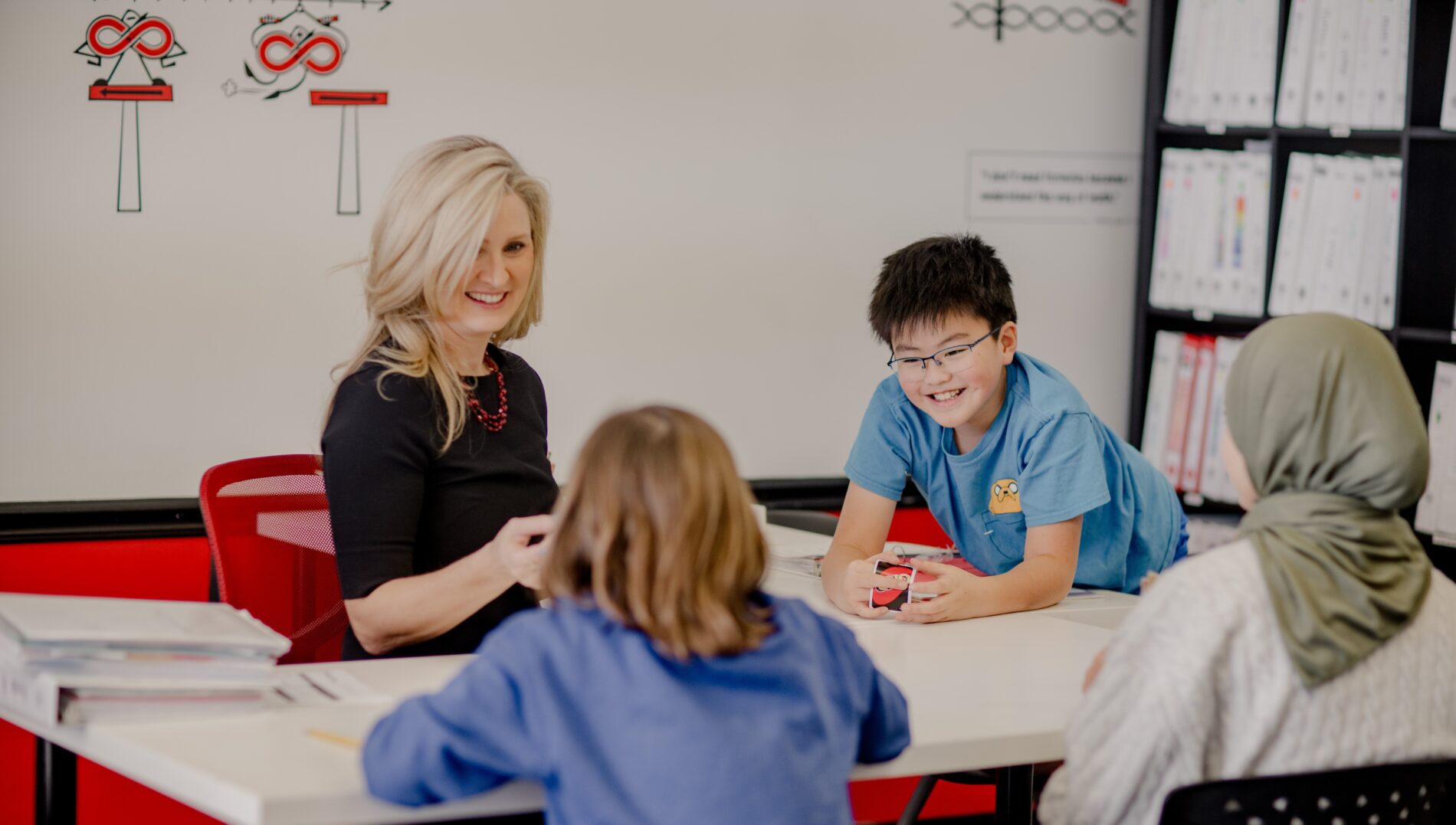
At Mathnasium, decimals, diameters and a dedication to humanity
Welcome to the warmest corner in the cold world of mathematics.
Here, the vibe blends laughter, cheers, even occasional prizes. And here, students who once squirmed over square roots now beam with confidence as they dance with the latest equation.
“You walk in, there are 20 or 30 kids working away, not a frown in the house, everybody having a good time and they’re … doing math?! What a wonderful thing,” says Larry Martinek, who taught math in Los Angeles schools for three decades.
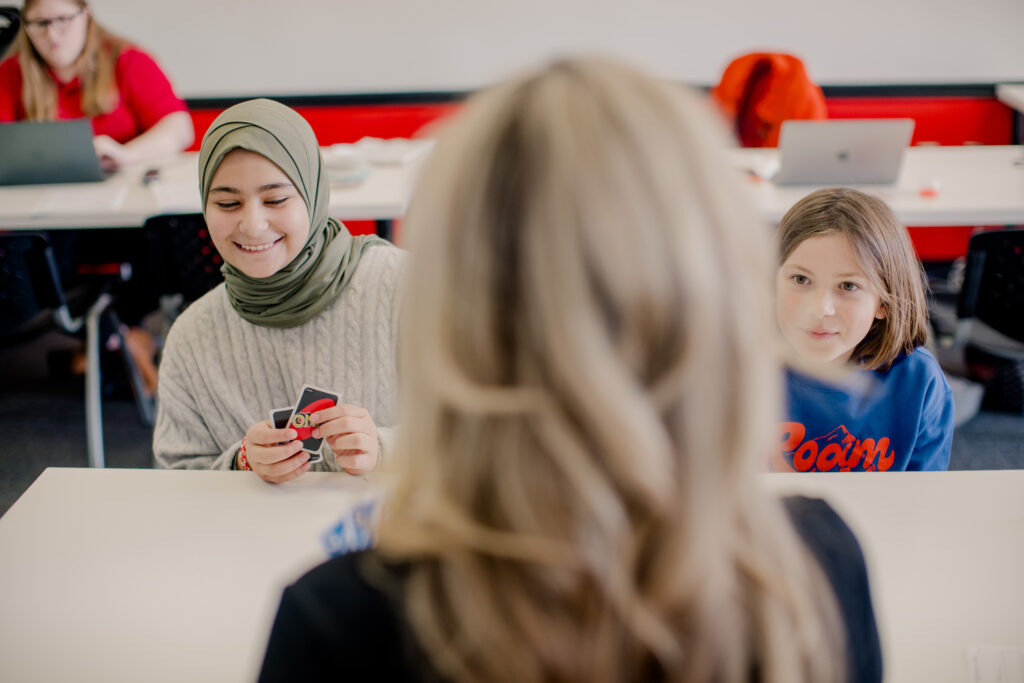
That happy place is Mathnasium Learning Centers, a franchise company that operates more than 1,100 math-only tutoring centers in 11 countries. At each location, instructors use everyday language and personalized plans to help K-12 students grasp math concepts in their minds before they break out pencil or paper, always avoiding rote memorization and repetitive exercises.
Today, company instructors call it “the Mathnasium Method.” But that approach was dreamed up years ago by an elementary school student named Nic Martinek and his math-teaching dad, Larry.
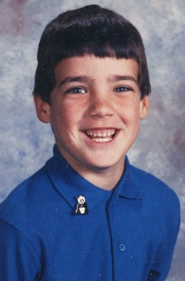
During their frequent drives to Northern California or during their meals at pizza joints along the way, father and son devised a unique way to visualize math problems, then solve them through conversation.
Back then, they playfully referred to their road-trip repartee as “pizza math.” As in: “Dad ate half the pizza and Nic ate one quarter. How much is left?” Soon, their chats evolved to include simple equations, like: “What’s 19 + 19 + 18?”
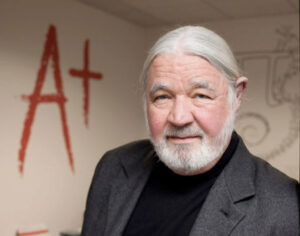
Initially, those quiet moments were just about a dad sharing math with his only son, an exceptionally bright kid who later qualified for Mensa and who, even at age 4, seemed at ease with arithmetic.
“Around the time Nic was 11, we realized we had something the world actually needed,” Larry Martinek recalls. Together, they ultimately produced thousands of pages of math curriculum to offer a fresh kind of instruction – the seeds of what would become Mathnasium.
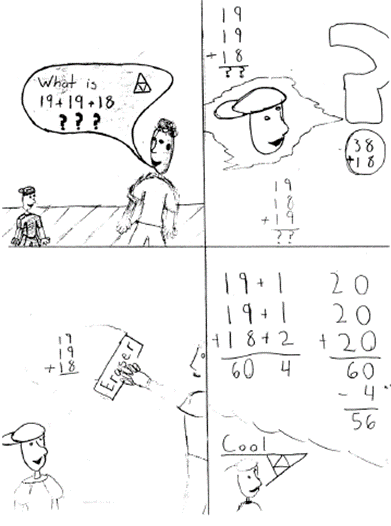
Then, suddenly, their mutual love of math became something far deeper. For Larry, it became something sacred.
While driving home from a date in May 1999, Nic fell asleep at the wheel, crashed the car and was killed. He was 19.
In the raw aftermath, Martinek asked his wife: “Where do we go from here?” Soon, an answer emerged: Share Nic’s way of thinking and their “pizza math” concepts with a larger audience. In 2002, Martinek teamed with education pioneers Peter Markovitz and David Ullendorff to launch Mathnasium in Los Angeles.
The company’s global franchises have now tutored more than 1 million students. And Nic remains – as they say in the math game – a central part of the equation.

“Nic and Larry’s natural language or ‘pizza math’ is the heart of Mathnasium’s pedagogy and instrumental in our success helping students understand, master and love math,” says Mike Davis, Mathnasium’s CEO. “That’s just one element of the safe environment that Mathnasium centers provide students around the world.”
“I like to think the humanity of Mathnasium started with Nic and me,” Martinek says. Now 75 with a silver ponytail, he evangelizes his teaching philosophy with a baritone voice and a glint in his eye. “An idea must exist in the mind before it exists on paper. When we can get kids to start to think math and not just do math, it’s a heck of a difference.”
Fueled by that humanity, Mathnasium’s franchises have expanded to five continents. More than 100,000 students attend Mathnasium in any given month. The average participant visits two to three times per week.
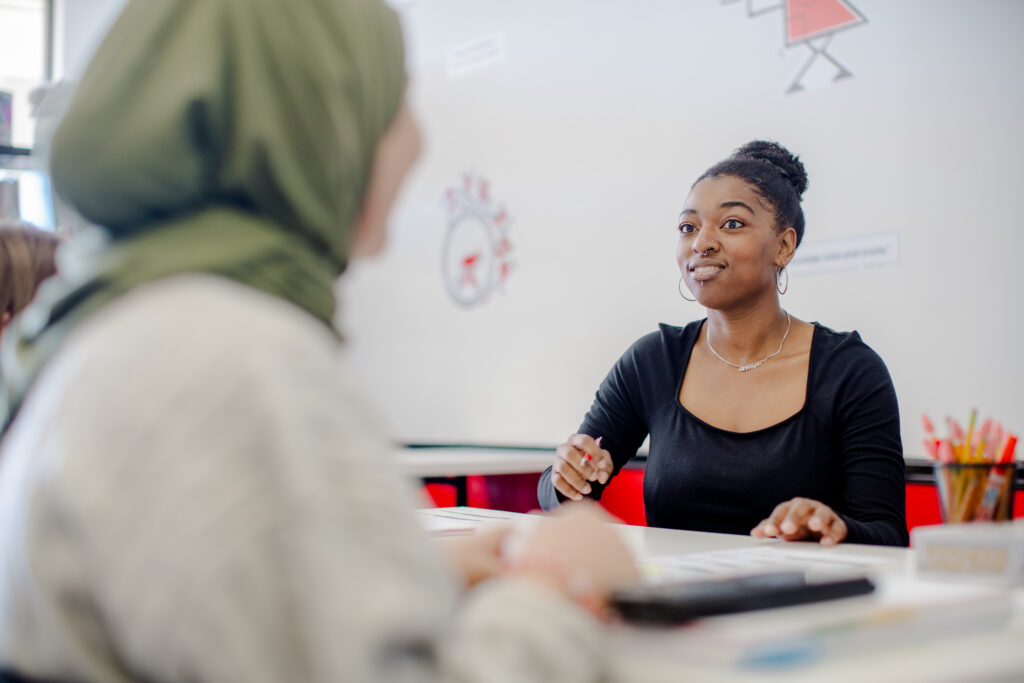
The cost is $200 to $500 per month, depending on the location of a franchise. For students who go several times each week, that works out to $15 to $57 per session – less than the cost of a private tutor, which averages $25 to $80 per hour, according to Tutors.com.
The company expects to add about 70 learning centers this year. While math has mystified generations of students, the demand for more franchises is also linked to the global pandemic, which closed schools and disrupted lives. Among 13-year-old U.S. students, math scores have declined by nine points since the 2019-2020 school year, according the National Center for Education Statistics.
“What has happened (involving kids’ math struggles) has been going on since the dawn of time. It’s just been accelerated (by COVID),” Davis says.
“Classrooms, by their nature, can only teach to the middle. So advanced students and remedial students have always had trouble getting attention. That’s more dramatic now because more kids are remedial. We’re seeing growth in both enrichment and remedial students,” Davis says.

Mathnasium’s personalized assessments and custom learning plans are crucial to diagnosing a student’s exact skill gaps. Remedial students who enroll in Mathnasium today are, on average, two years behind in fundamental math skills.
Six Microsoft tools help power the Mathnasium tech stack, or the collection of backend technologies it uses to scale, run the business and teach, Davis says. They are: SQL Server, ASP.NET MVC, Azure DevOps Server, Visual Studio, GitHub and Internet Information Services (IIS) for Windows Server.
Many of Mathnasium’s newest centers were opened by existing franchise owners. “And to grow from (owning) one center to two to three, you need efficient operations. Those efficient operations were built on Microsoft technology,” Davis says.
“The stack we have today makes us efficient, allowing people to spend more time engaging with students, parents and their communities, which drives enrollments and revenues,” he adds.

Each franchise also relies heavily on the company’s proprietary business platform, called Radius, which houses the curriculum, billing and customer relationship management tools. That system was built entirely with Microsoft code.
“It is central to everything – our leads, our business projections, our enrollment, our employee training,” said Carli Sonntag, a former middle school math teacher who owns two Mathnasium franchises, one near Houston, the other near Raleigh, North Carolina.
On a recent weekday, three students sat together at Sonntag’s learning center near Raleigh, pencils in hand, calculators at the ready, all poring over papers packed with math exercises. Each student worked to master a distinctive math area. Assessment tests had previously identified their individual math gaps.
Roman Aguirrechu, 10, was gaining ground on multiplication. “My 4s and 7s are way better,” he said. “I like it here. It can be funny. People are nice. I wasn’t a huge fan of math before.”
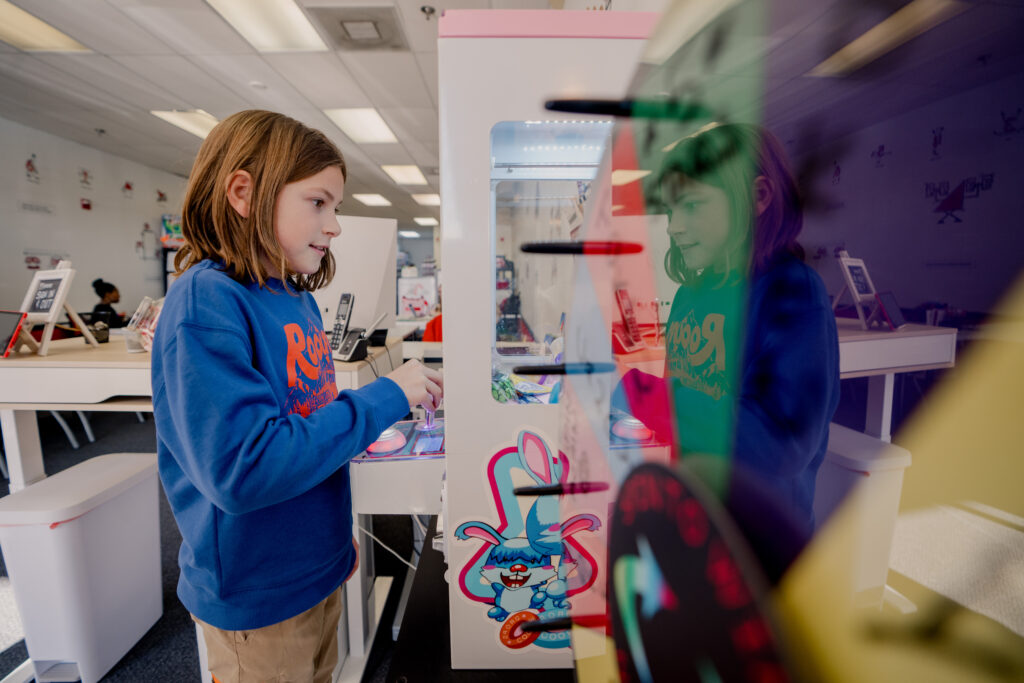
Jonathan Kim, 10, focused on fractions. “It rewards you with prizes if you do good enough,” he said. “Like, once I got a Nerf Blaster!”
Yusra Mohareb, 12, joined after a rough academic year when she found the instruction hard to follow. She’s bumped her overall math score to an A from a C. “Here, they teach you one-on-one and you don’t get frustrated,” she said. “They actually show the math to you and make sure you understand.”
After the math exercises were done, the hush of the study period gave way to a rousing few minutes of laughs as the students joined Sonntag for Uno, a number-based card game.
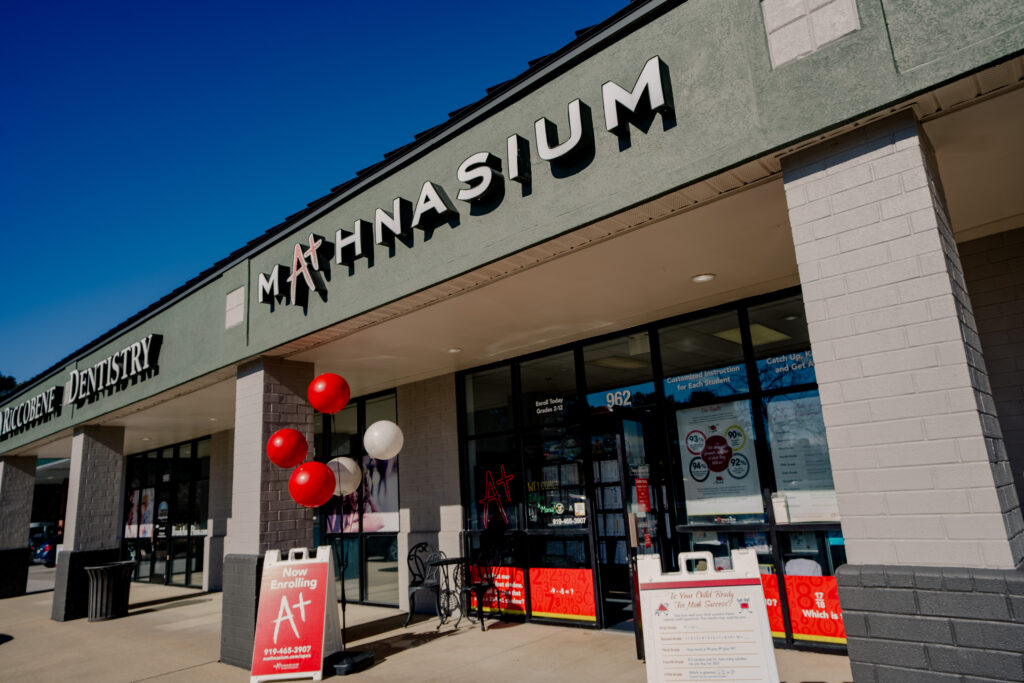
“When I taught middle school in Texas, some kids could multiply, some couldn’t tell you the answer to three times two,” Sonntag recalls. “It was this wide range of ability, and you couldn’t help them all. Here, I feel like I’m solving a problem.”
At the same time, Sonntag knows she’s honoring a father’s dream – and helping to elevate his son’s legacy. She has met Larry Martinek. She found him to be “inspirational and motivational,” she says.
“His son was where we all are today: We all want to make a difference, build confidence and make math palatable. Larry and Nic were always going to do that together. After Nic’s passing, Larry knew he had to make their vision work,” Sonntag says. “I mean, this is going to make me cry. Who’s not going to be moved by that story?”
Top photo: Sonntag laughs with students Jonathan Kim (facing camera) and Yusra Mohareb and Roman Aguirrechu (backs to camera).
Photos of Nic Martinek and Larry Martinek courtesy of Mathnasium. All other photos by Christobal Perez/Azul Photography.
